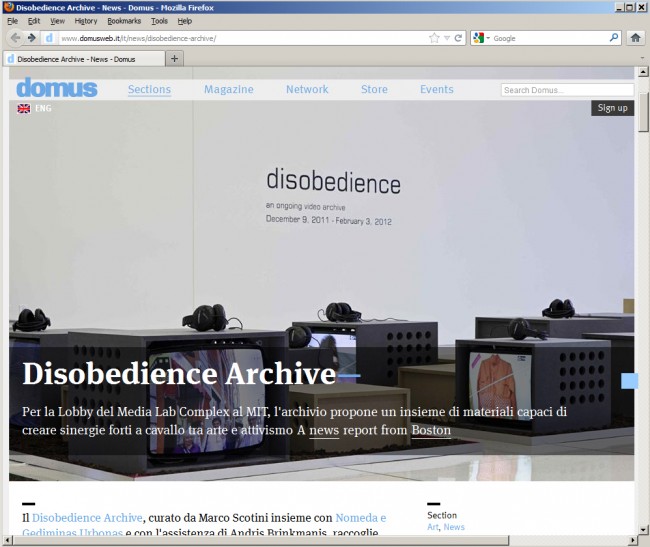A private or public sleeping space?
by Zenovia Toloudi
April 10th, 2012
http://blog.shiftboston.org/2012/04/a-private-or-public-sleeping-space
The concept of micro-spaces, explored in (the recent) Antoni Muntadas, Volume 1: Between book and (for long present) work, is also very present in Giacomo Castagnola‘s practice, where he explores a series of interstitial spaces interconnecting the building with the body. His latest project, is a micro-space for sleeping, a semi-private small environment, can be found and experienced in the semi-public Fumihiko Maki‘s new MIT Media Lab ”whitish” lobby. According to the artist (also designer, architect, and currently a graduate student at MIT Art, Culture & Technology) :
“Sleeping is a behavior that happens all the time in hidden corners and library couches throughout MIT, and I am interested in accommodating a space for that ‘non conforming’ activity in order not to represent civic disobedience only, but to actually embody it within the project…
…The ideas generated by “sleeping in public” as a form of social critique led me to an article on Richard Stallman by K.C. Jones in InformationWeek, that notes: ‘until around 1998, his office at MIT’s AI Lab was also his residence. He was registered to vote from there.’ In other words, Stallman was sleeping on campus.”
The multi-faceted project refers to MIT’s hacking culture (with famous examples like that of students placing MIT Police Car on the Great Dome of MIT back in the 1994) . From installation’ s manifesto:
”Sleeping with Stallman is a ‘hack’ into the exhibition space with the simple activity of sleep or rest.
‘Hack’ is another MIT-coined word: ‘A hack is a parodic, practical joke designed to debunk authority.’ As Stallman says, ‘hacking means exploring the limits of what is possible, in a spirit of playful cleverness’.”
The temporary micro-space is part of the “Disobedience Archive” research and exhibition curated by Marco Scotini together with Nomeda & Gediminas Urbonas on show until April 15th in the MIT Media Lab lobby. It consists of a soft platform that hosts three sound compilations and three reading sections.
The project is very popular among MIT community since in this case art provides a function, an opportunity for the users to occupy the building in a more comfortable way through naps and rests. It creates a contrasting to the transparent (surveilling, open) Media Lab, little corner where one can hide and sleep without complete isolation. It provides an opportunity to enjoy the small (individual bubble) while being part of the big (system).
*ZIG-ZAG is a series of two-fold posts that present one project (ZIG) and their creator (ZAG).
SHIFTboston’s readers can participate in the process by submitting their questions and comments (ZAG), or to pinpoint interesting projects or their projects for exploration (ZIG).




